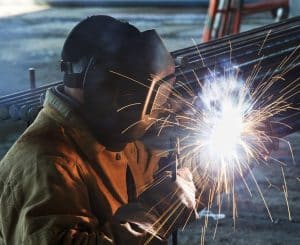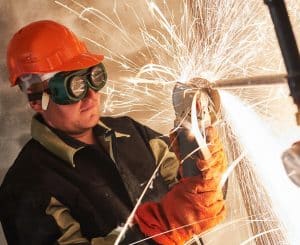Welding cast iron can be a daunting task for many, but with the right techniques and know-how, you can achieve professional results. Whether you’re a seasoned welder or just starting out, mastering the art of welding cast iron is essential for various industrial and DIY projects. In this comprehensive guide, we’ll explore advanced techniques that will help you weld cast iron like a pro.
Understanding Cast Iron’s Properties Before Diving In
Before delving into advanced welding techniques, it’s crucial to understand the properties of cast iron. Unlike steel, cast iron is brittle and prone to cracking when subjected to high heat and stress. Additionally, it has a high carbon content, which makes it challenging to weld using conventional methods. However, with the right approach, welding cast iron is not only possible but can also yield durable and reliable results.
Essential Steps Before Welding Cast Iron
Proper preparation is essential for successful cast iron welding. Begin by thoroughly cleaning the surface area to be welded, removing any dirt, rust, or contaminants. Next, carefully inspect the casting for any cracks or defects that may need to be addressed before welding. Depending on the condition of the cast iron, preheating may be necessary to minimize the risk of cracking during welding.
Choosing the Right Welding Method
When it comes to welding cast iron, there are several methods to choose from, including stick welding, MIG welding, TIG welding, and oxy-acetylene welding. Each technique has its advantages and limitations, so it’s essential to select the method that best suits your specific application and skill level.

Stick Welding (SMAW)
Stick welding, also known as Shielded Metal Arc Welding (SMAW), is a popular choice for welding cast iron due to its versatility and accessibility. To weld cast iron using this method, it’s crucial to use a high-nickel rod specifically designed for cast iron welding. Additionally, preheating the casting and employing a peening technique can help reduce the likelihood of cracking.
MIG Welding (GMAW)
MIG welding, or Gas Metal Arc Welding (GMAW), is another option for welding cast iron, particularly for thicker sections. When MIG welding cast iron, using a high-nickel wire and employing a backstep technique can help minimize distortion and reduce the risk of cracking.
TIG Welding (GTAW)
TIG welding, or Gas Tungsten Arc Welding (GTAW), offers precise control and excellent aesthetics, making it suitable for welding thin or intricate cast iron components. When TIG welding cast iron, using a high-nickel filler rod and employing a slow travel speed can help ensure proper fusion and minimize heat-affected zone (HAZ) cracking.
Oxy-Acetylene Welding
Oxy-acetylene welding, commonly referred to as gas welding, is a traditional method that can be used for welding cast iron. However, it requires skill and experience to achieve satisfactory results, as the heat input must be carefully controlled to prevent excessive heating and subsequent cracking.

Cedric Marina: Expert Cast Iron Welding in Surrey & Vancouver
Certified “A” welders at Cedric Marina Ltd. specialize in cast iron repair and fabrication for both automotive and marine applications in Surrey and Vancouver, BC. With over 20 years of experience, we offer high-quality, cost-effective solutions to restore cracked or broken cast iron parts on your vehicle or boat, ensuring a fast and reliable return to operation.
Contact Cedric Marina today for a free consultation and discuss your cast iron welding needs!
FAQs
- Can you weld cast iron without preheating?
Preheating is recommended when welding cast iron to reduce the risk of cracking, especially for thicker sections.
- What is the best filler metal for welding cast iron?
High-nickel filler rods are commonly used for welding cast iron due to their excellent ductility and compatibility with the base metal.
- How do you prevent cracking when welding cast iron?
Techniques such as preheating, controlling heat input, and employing peening or backstep welding can help minimize the risk of cracking during welding.
- Is cast iron welding suitable for DIY projects?
While welding cast iron requires skill and experience, with proper preparation and practice, it can be done successfully for various DIY applications.
- Can you repair cracked cast iron parts with welding?
Yes, cracked cast iron parts can often be repaired using welding techniques such as stick welding or TIG welding, depending on the severity of the crack and the application.
- What safety precautions should be taken when welding cast iron?
Safety precautions when welding cast iron include wearing appropriate personal protective equipment (PPE), ensuring proper ventilation, and being aware of potential hazards such as fumes and arc flash.
- Are there any alternatives to welding for repairing cast iron parts?
In some cases, alternatives to welding, such as brazing or cold welding techniques, may be used to repair cast iron parts, depending on the application and the extent of the damage.



